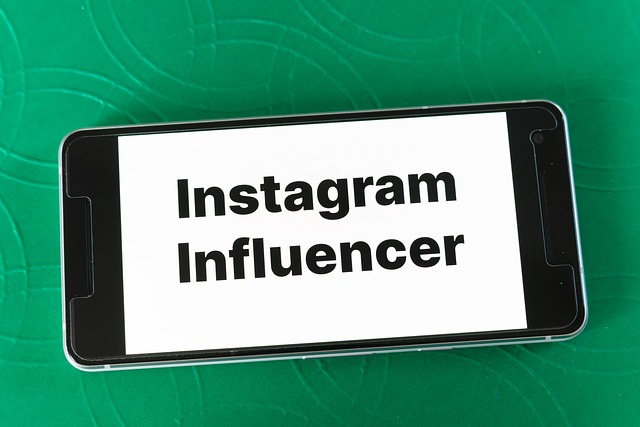Introduction: Why Personalization Isn’t Optional Anymore
From Mass Messaging to Individual Relevance
For decades, marketing was about reaching the widest possible audience with a single message. But today, that approach no longer works. Customers are inundated with options, and they expect brands to know who they are, what they like, and what they need.
- Generic campaigns are quickly ignored
- Users now expect brands to speak directly to them
- Relevance is no longer a bonus—it’s the baseline
What Modern Customers Expect
Customer expectations have shifted from passive consumption to active engagement. People don’t just want relevant content; they expect brands to anticipate their preferences and deliver meaningful, seamless experiences.
- On-demand personalization across platforms
- Tailored recommendations that reflect real habits
- Messaging that adapts over time based on their behavior
A New Competitive Advantage
In a crowded market, personalized marketing isn’t just a nice-to-have—it’s a strategic edge. Brands that deploy it effectively see stronger customer relationships, better ROI, and increased loyalty.
Benefits of personalization include:
- Higher engagement and click-through rates
- Improved conversion and retention
- More meaningful customer insights
Personalization has moved from a marketing tactic to a business-critical strategy. Companies that embrace it set themselves apart by building trust and relevance with every interaction.
The Core Pillars of Personalization
Personalization doesn’t happen by accident. Behind every tailored offer, relevant message, or perfectly-timed recommendation lies a framework built on smart data practices, sharp audience segmentation, and real-time communication. Here are the foundational elements that make personalization effective and scalable:
Data Collection: Ethical, Intentional, and Actionable
To personalize anything effectively, marketers must first understand their audience. That journey begins with data—but not just any data.
What to Track:
- On-site behavior (clicks, time spent, pages viewed)
- Purchase history
- Email engagement (opens, clicks, bounce rate)
- Social media interactions
- Customer feedback and support interactions
Using Data Ethically:
- Be transparent about data usage policies
- Allow users to opt into personalization
- Prioritize first-party data over third-party sources
- Protect user privacy with secure data storage and compliance (e.g., GDPR, CCPA)
Segmentation: Beyond Demographics
Effective personalization goes far deeper than age or location. Behavioral segmentation reveals intent, preferences, and stage in the buyer journey.
Advanced Segmentation Strategies Include:
- Grouping users by browsing or buying behavior
- Identifying intent signals (search patterns, content consumed)
- Mapping customer journey stages (awareness, consideration, decision)
- Creating segments based on engagement levels (high-value vs. at-risk users)
Smart segmentation allows marketers to deliver relevant messages that resonate with where customers are—not just who they are.
Dynamic Content Delivery: Making Every Interaction Count
Once data is collected and segmented, the next step is delivering real-time content that adapts to user behavior.
Examples of Dynamic Personalization:
- Website banners changing based on the user’s last product viewed
- Email content and product suggestions tailored to browsing history
- Chatbots offering different interactions depending on user actions
- Ads that shift messaging based on geolocation or weather conditions
Dynamic content isn’t just about speed—it’s about relevance. The goal is to respond to users’ needs in the moment, creating seamless and useful touchpoints.
Together, these three pillars—data collection, segmentation, and dynamic content—form the infrastructure for modern personalization that feels intuitive, not intrusive.
Marketing Channels Where Personalization Matters Most
Personalization isn’t just a strategy—it’s how marketing works now across every major touchpoint. Each channel has its own role to play, and when done right, they work together like gears in a machine. Here’s where smart marketers are locking in relevance:
Email: The inbox is still king—if you know how to earn your stay. That starts with subject lines that cut through clutter and speak directly to the individual. Think less “20% off now” and more “Still looking for running shoes that won’t wear out?” Inside the email, personalized product picks based on past behavior or browsing history make a massive difference. Batch-and-blast is out. One-to-one is in.
Web: Landing pages are no longer static. If someone clicks through from a social ad about skincare, their landing page better talk about skincare—not your whole product catalog. Adaptive web content, driven by behavioral data and referral source, helps guide users down the right funnel without wasting time.
Social Media: It’s noisy out there. The only way to cut through is relevance. Targeted social ads that speak like an actual human—not a brand trying too hard—are converting better than slick but generic creative. If someone’s been watching DIY videos, serve messaging that fits that curiosity, not a random flash sale.
E-commerce: Predictive personalization takes the guesswork out of shopping. When done right, it suggests the right product at the right moment—without the user needing to dig. It’s the digital version of a good store clerk who knows what you’re actually looking for, not just what’s on the front rack. Think intuitive search, personalized bundles, and homepage recommendations based on browsing—not what’s trending.
Execution here doesn’t require a massive tech stack—it starts with knowing your data, understanding the user’s mindset, and responding with content that’s frictionless and specific. Smart wins. Broad doesn’t.
Tools and Tech Making Personalization Scalable
Personalization at scale isn’t just about intent—it’s about infrastructure. AI and machine learning now sit at the heart of top-performing recommendation engines. Whether it’s nudging someone towards a product they didn’t know they needed or serving content based on micro-behaviors, these systems learn faster than any team ever could. They watch, adapt, and serve up suggestions that feel handpicked—even if they’re machine made.
At the same time, CRM and marketing automation platforms have gotten smarter. The days of basic name-insertion emails are gone. These platforms map a user’s behavior across channels, automate follow-ups, and queue up personalized journeys based on where someone is in the funnel. It’s about reaching the right person, at the right moment, with the message that actually gets them to act.
Then there’s real-time behavior tracking. This is where speed meets context. Brands that respond instantly—like serving a discount while someone hovers on a cart page—convert better. It’s not about guessing what a user might do next. It’s about reacting to what they’re doing now, with content or offers that make the moment count.
When used together, these tools turn fragmented strategies into cohesive, data-driven ecosystems that actually scale without watering down the experience.
Measurable Impact: Results Brands Are Seeing
Personalization isn’t just a buzzword—it’s proving its value on the bottom line. When brands tailor content, timing, and experiences to individual users, conversion rates go up. Customers are more likely to click, buy, or subscribe when what they see actually speaks to them.
It doesn’t stop at the first sale. Personalized journeys yield better retention and customer lifetime value. Whether it’s a series of follow-up recommendations or adaptive onboarding communications, familiar feels personal—and personal turns into loyalty.
And then there’s the feedback loop. The more a brand personalizes, the more it learns about preferences, patterns, and unmet needs. These insights don’t just fine-tune future campaigns—they uncover trends that can shape everything from product development to overall strategy.
In short: when you treat customers like individuals, they return the favor with action and loyalty.
Common Pitfalls to Avoid
Personalization is powerful—but when it goes wrong, it goes very wrong. First, let’s talk about overpersonalization. Just because a brand can mention someone’s city, pet’s name, or last click in an email doesn’t mean it should. Get too specific, too fast, and it feels less helpful and more like surveillance. The result? Creeped-out customers who unsubscribe and don’t look back.
Then there’s stale data. If you’re still showing winter jackets to someone who bought one three months ago—or worse, marketing to someone based on outdated purchase behavior—you’re breaking trust. Relevance has a shelf life. Expired info doesn’t just miss the mark; it makes people question how well you know them.
Finally, the all-too-common trap: setting and forgetting. Personalization isn’t a one-and-done setup. If you’re not testing what works, tracking performance, and evolving your strategy, you’re falling behind. Smart brands treat personalization as a living system—always learning, always adjusting.
Real-World Use Cases
Personalization is more than just technology—it’s how brands create meaningful, relevant experiences that feel one-to-one at scale. Below are examples of how companies in different sectors are using personalization to drive results:
DTC Brands: 1:1 Product Suggestions That Convert
Direct-to-consumer (DTC) brands are leading the way when it comes to individualized product recommendations. This isn’t just about greeting customers by name—it’s about context-aware, behavior-based personalization that mirrors in-store guidance.
- Browsing behavior tracking to suggest complementary items or restocks
- First-party data (like fit, color preferences, or previous purchases) used for more accurate recommendations
- Triggered emails or SMS messages that offer tailored promotions based on where the customer left off in the purchase journey
B2B: Nurture Journeys Shaped by Intent
Business-to-business (B2B) marketers are personalizing the longer, more complex buyer journeys by using intent data and behavior-based triggers, rather than relying solely on firmographics.
- Custom nurture tracks based on job title, engagement level, or solution interests
- Dynamic lead scoring that updates based on real-time behaviors like content downloads or repeat site visits
- Email sequences that reflect a lead’s stage in the decision-making process
Global Brands: Localization as a Personalization Strategy
For global brands, personalization means speaking the customer’s language—literally and culturally. Localization goes beyond translation to include local customs, seasonality, and even device behavior preferences.
- Region-specific promotions and messaging tied to local events or trends
- Localized website experiences with variations in imagery, CTAs, and tone
- Time-zone-aware outreach for email, SMS, and app notifications
These examples show how personalization, when tailored to the customer’s journey and context, can significantly improve engagement and loyalty across sectors.
Looking Ahead: The Future of Personalized Marketing
Personalization is heading into sharper territory—less friendly handshake, more sixth sense. Brands are now tapping predictive AI to shape experiences before customers even ask. Based on behavior patterns, past purchases, and even scroll speed, AI can anticipate needs and surface content or products that land just right. Think of it as personalization on autopilot—but with instincts.
Next, there’s context-aware marketing. It’s not just who the user is, but where they are, what time it is, and sometimes, what mood they’re in. A running app might suggest a hydration supplement after a long jog. A music service could shift tones during rainy weather. Context builds relevance without being obvious—and that’s when it works best.
But it’s not just tech and data. The emotional layer still matters. The smartest brands are syncing personalization with storytelling. They’re not just showing the right jacket—they’re wrapping it in a narrative. Maybe it’s about urban resilience, outdoor freedom, or a minimalist mindset. When the story aligns with the user’s journey, personalization hits deeper—and becomes memorable.
2024 will reward brands that know their audience and respect the boundary between helpful and creepy. Smart, subtle, and strongly tied to story—that’s where it’s heading.
Related Read
For a broader perspective on where marketing is headed and how personalization fits into the bigger picture, take a few minutes to read Current Marketing Trends to Watch in 2023. While some 2023 trends are evolving fast, others laid the foundation for what we’re seeing in 2024—from smarter automation to deeper customer segmentation. Not everything stays relevant, but the context helps you make sharper decisions moving forward.
Conclusion: Make Every Interaction Count
Personalization isn’t just a growth hack—it’s the backbone of how modern marketing works. Customers want relevance, not noise. And in a world flooded with content, brands that deliver tailored, thoughtful experiences stand out.
But this isn’t about building a massive personalization engine overnight. The smartest brands start small. A welcome email that uses a first name. A homepage that remembers browsing history. A reminder that doesn’t feel robotic. Those little moments build trust—and trust is the ultimate differentiator.
Scaling comes later, with systems that grow alongside your strategy. But none of it works if the foundation—respect for customer data and intent—isn’t there. People will forgive an ad that misses the mark. They won’t forgive one that feels creepy or invasive.
So start lean. Test often. Measure what matters. And always treat personalization as a privilege, not just a tactic. Your customers are telling you what they want. The real strategy? Actually listening.



